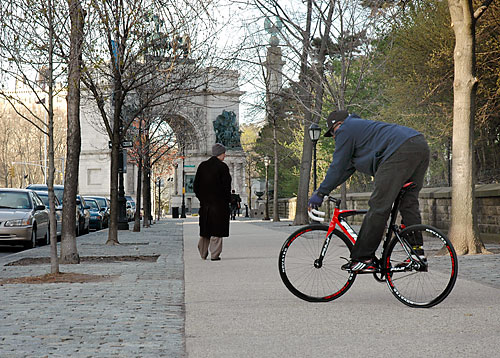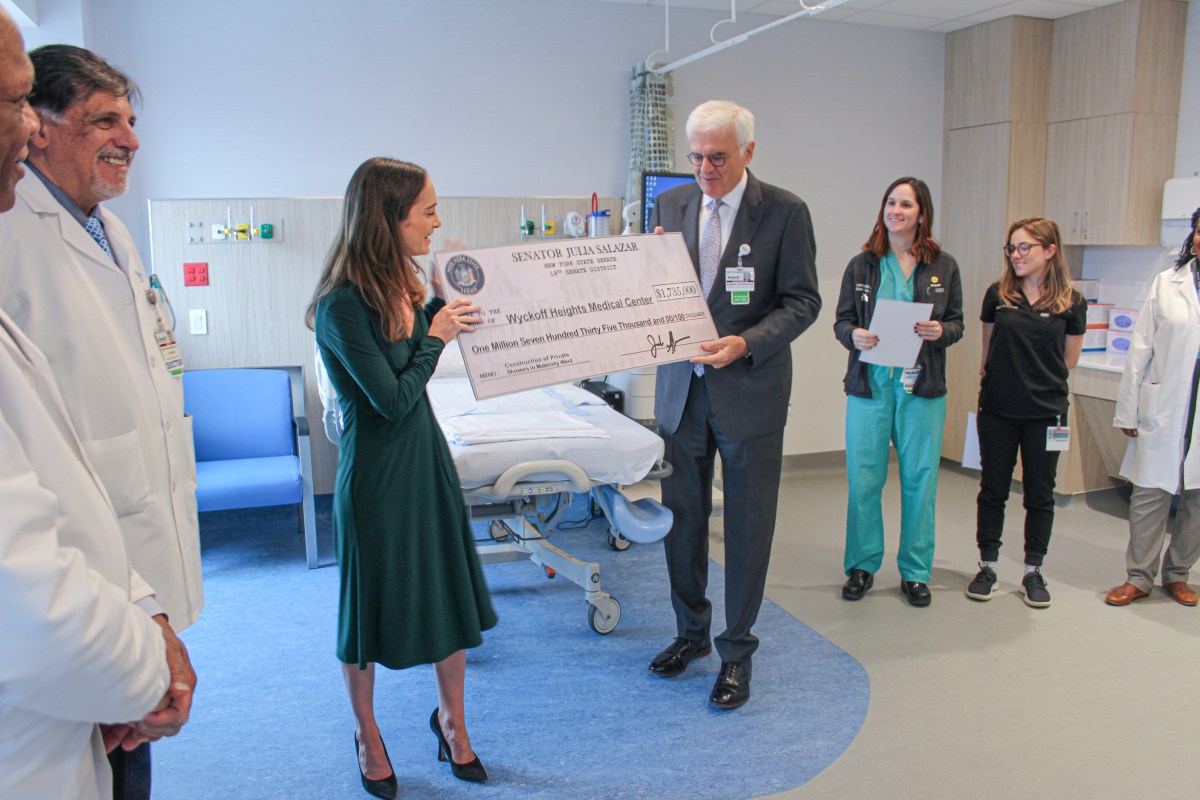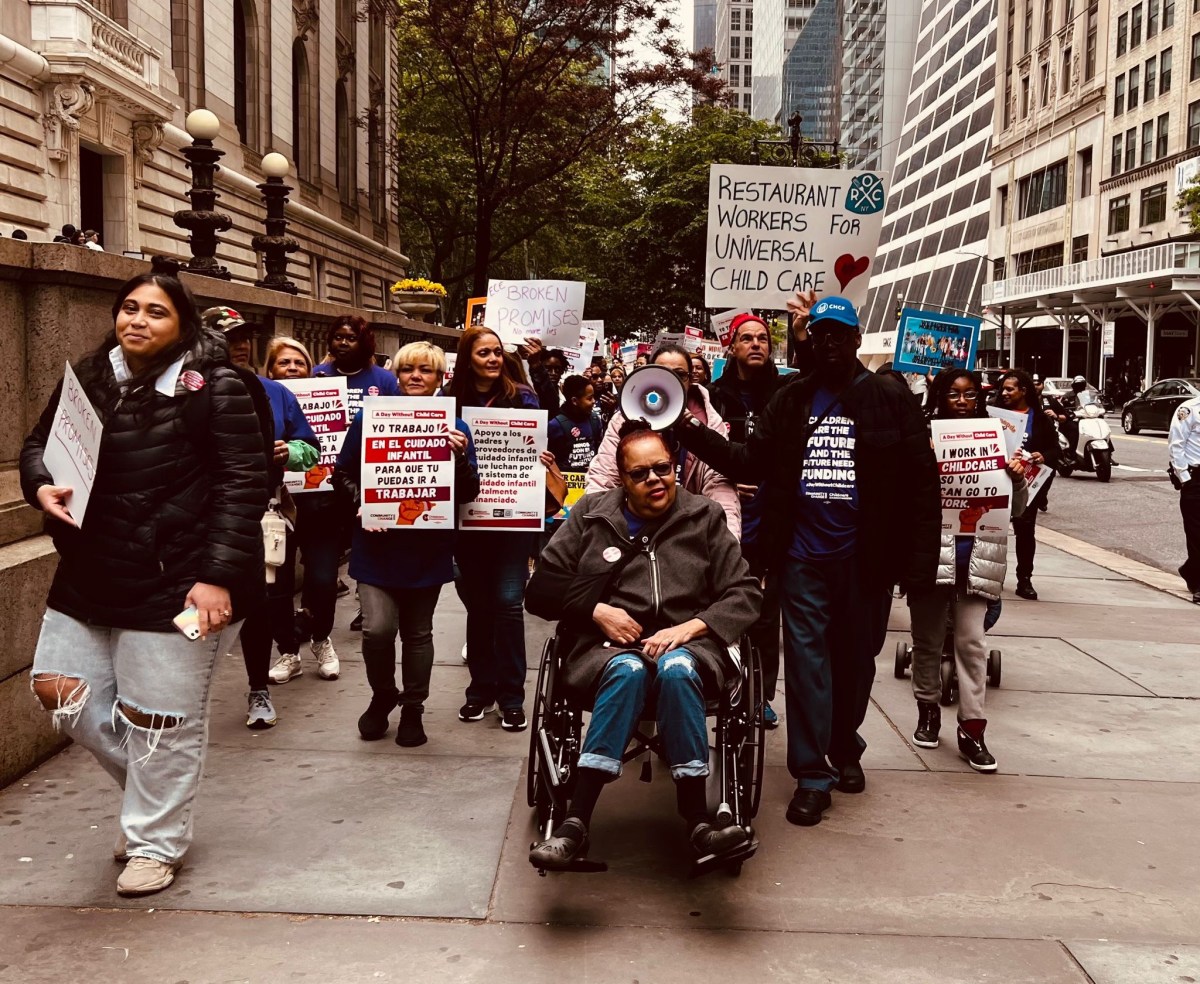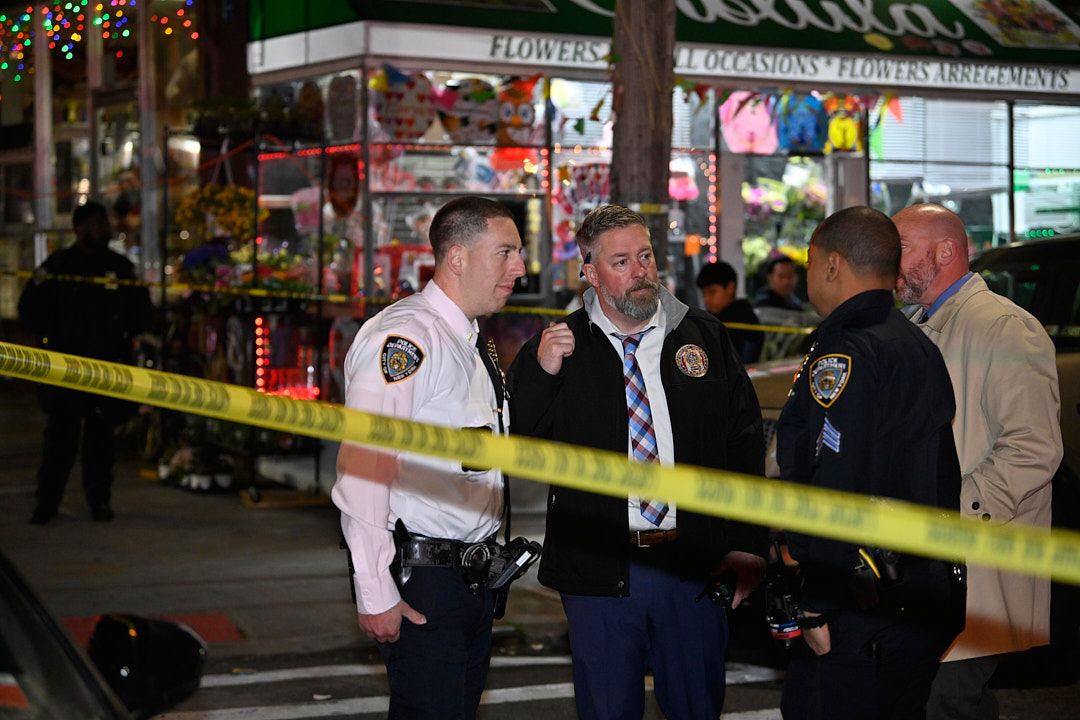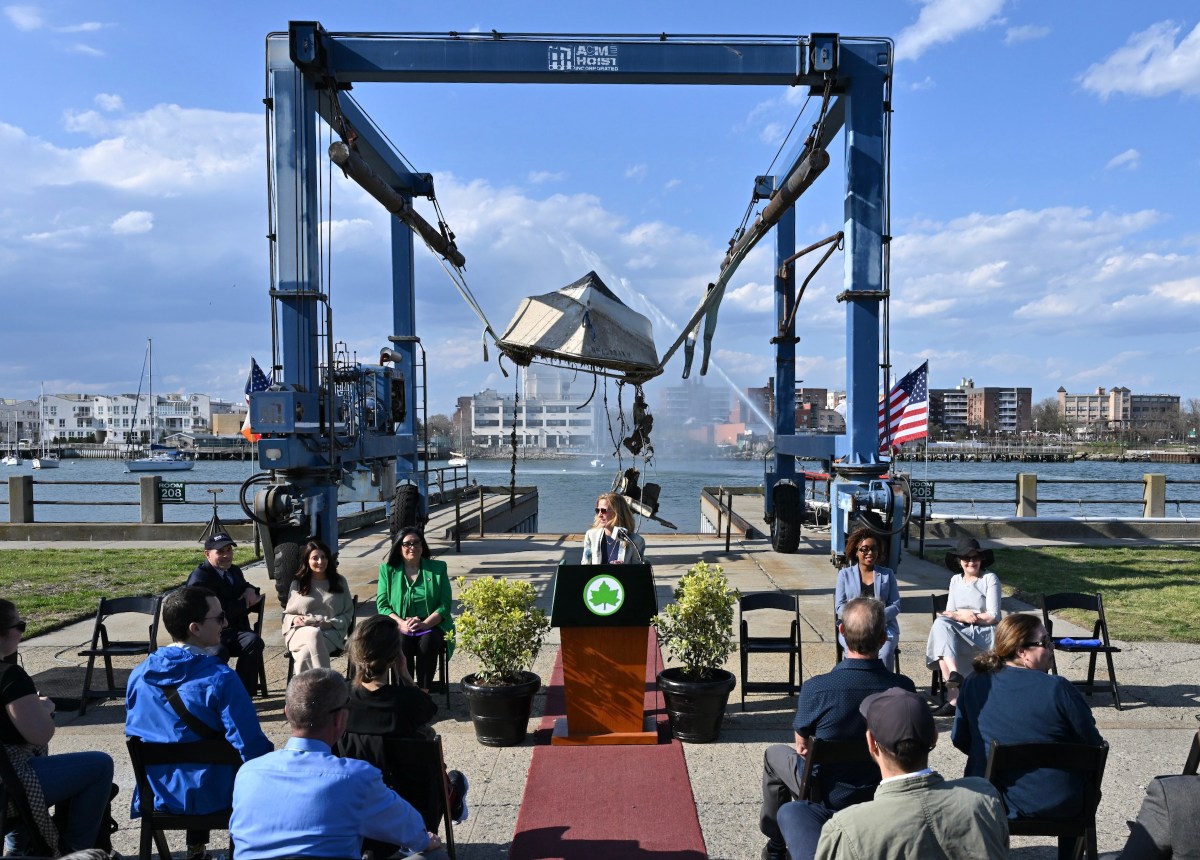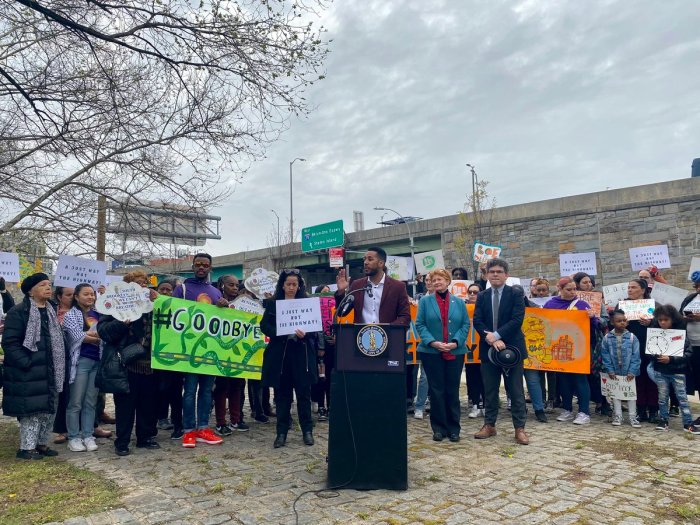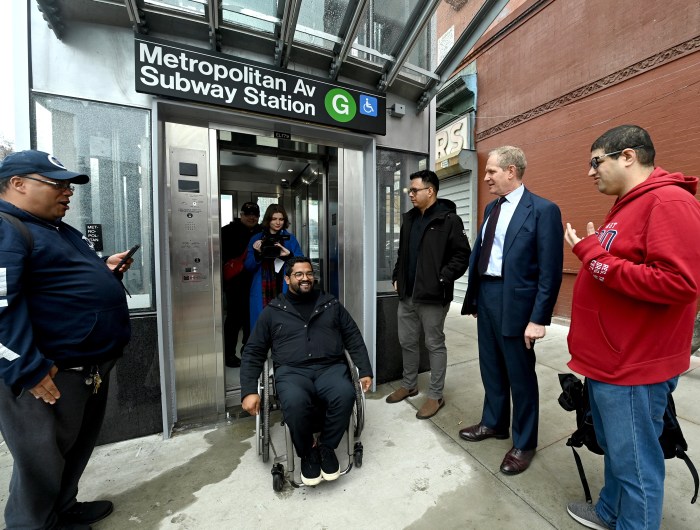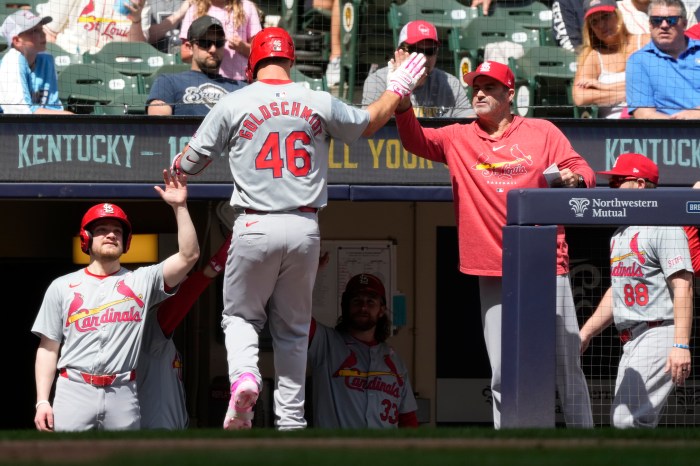City officials shot back at opponents of the controversial Prospect Park West bike lane last Thursday, saying that the two-way protected bike path is all about making Park Slope’s notorious speedway safer.
The bike lane, which would run from Grand Army Plaza to Bartel Pritchard Square and require the removal of one lane of southbound car traffic, has enraged some residents because it would cause the removal of 22 parking spaces, result in more congestion from double-parked cars and create a potential hazard for pedestrians not accustomed to looking out for cyclists heading in two directions.
But the city defended its decision, saying that the lane would make Prospect Park West safer — for everyone.
“We prioritize safety above other types of considerations,” said Josh Benson, director of the Department of Transportation’s bicycle program. “Speeding is a problem on that stretch, and we’re going to keep people safe.”
The current bike lane inside Prospect Park is one-directional, which encourages northbound cyclists to ride on the wide sidewalk of Prospect Park West — endangering stroller pushers and other park users. As such, many Slopers hailed the city plan.
“Prioritizing biking is a great idea,” said Gina Vasoli. “You can get through Prospect Park on a bike one way, but the other way is impossible. [Prospect Park West] will be safer.”
Supporters came prepared, too. Eric McClure of Park Slope Neighbors, a community group, testified that a survey by the group revealed that at least 85 percent of drivers exceed the speed limit on Prospect Park West, 30 percent of them averaging 40 mph or more.
“It’s a dangerous road, and this plan is really going to change that,” said McClure.
But lane supporters shared the Community Board 6 Transportation Committee hearing with an equal number of cycling critics, many of them Prospect Park West residents, who grumbled that the city’s blueprints are great in theory, but not where the rubber hits the road.
“In the area of Grand Army Plaza, where it’s already unfriendly to traffic, why would you want to add more bikes?” said Dan O’Leary, 42-year resident of the strip. “When it doesn’t work, drivers will be affected.”



